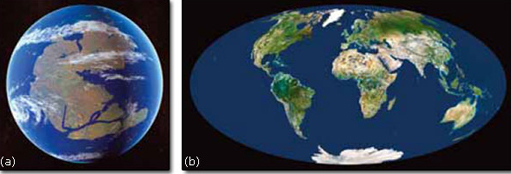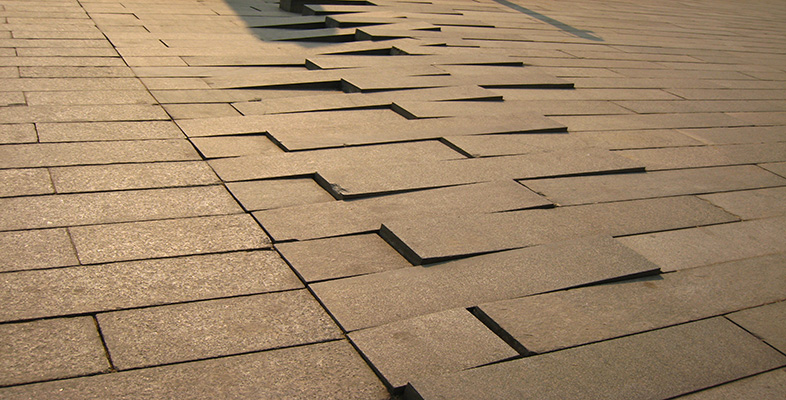1 Preamble: the moving Earth
The Earth's face is changing all the time, but at barely perceivable rates. It is now known that the Earth is a highly dynamic planet - far more so than the other terrestrial planets (Mercury, Venus and Mars) and the Moon - and one that has altered its outward surface many times over geological time. On Earth, this dynamism is manifest in the opening and closure of ocean basins and the associated movements of continents called continental drift. At times, continental drift has resulted in the continents fragmenting into many smaller land masses, whilst at other times collisions have assembled vast supercontinents with immense mountain chains along their joins (Figure 1). Such constant rearrangement has had a profound effect upon the surface geology of our planet. It has also affected the hydrosphere through the changes in the shape and size of the oceans, the ocean-atmosphere circulation, the configuration and extremities of the Earth's climate zones and, perhaps, even the nature of the biosphere and the course of the evolution of life itself.
The Earth formed from a primordial nebula and then developed its layered structure (i.e. core, mantle and crust). There are physical and chemical differences between those three layers, differences that distinguish the mantle and the crust, the heat that is generated within them makes its way to the surface to be lost into space. It is the movement of this internal heat that drives the forces that result in the formation and destruction of ocean basins and, ultimately, the movement of the continents.

Click on 'View document' below to see a larger version of the above image.
View document [Tip: hold Ctrl and click a link to open it in a new tab. (Hide tip)]
